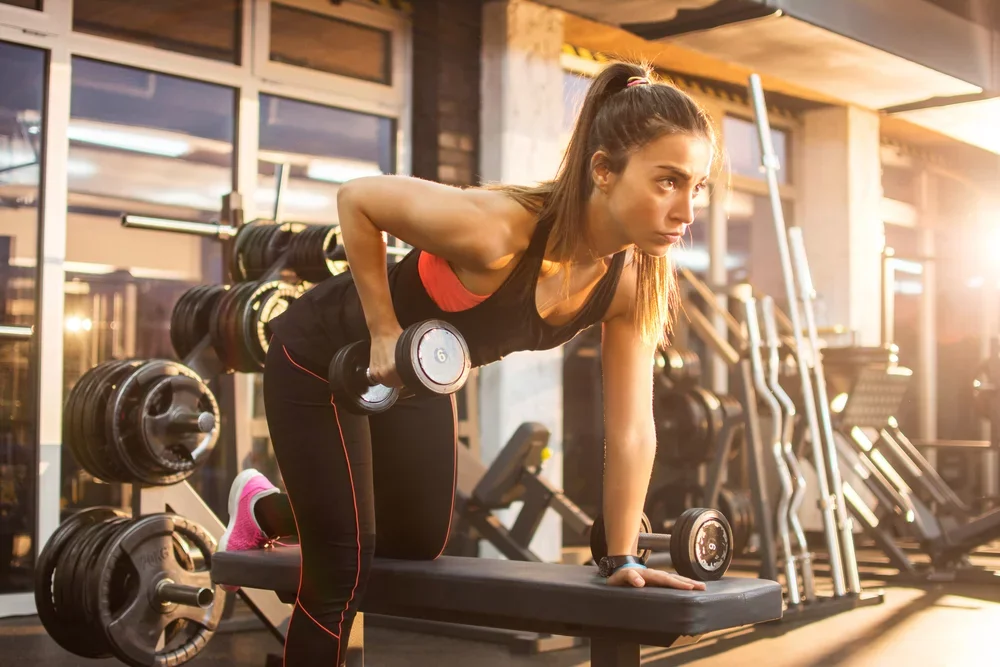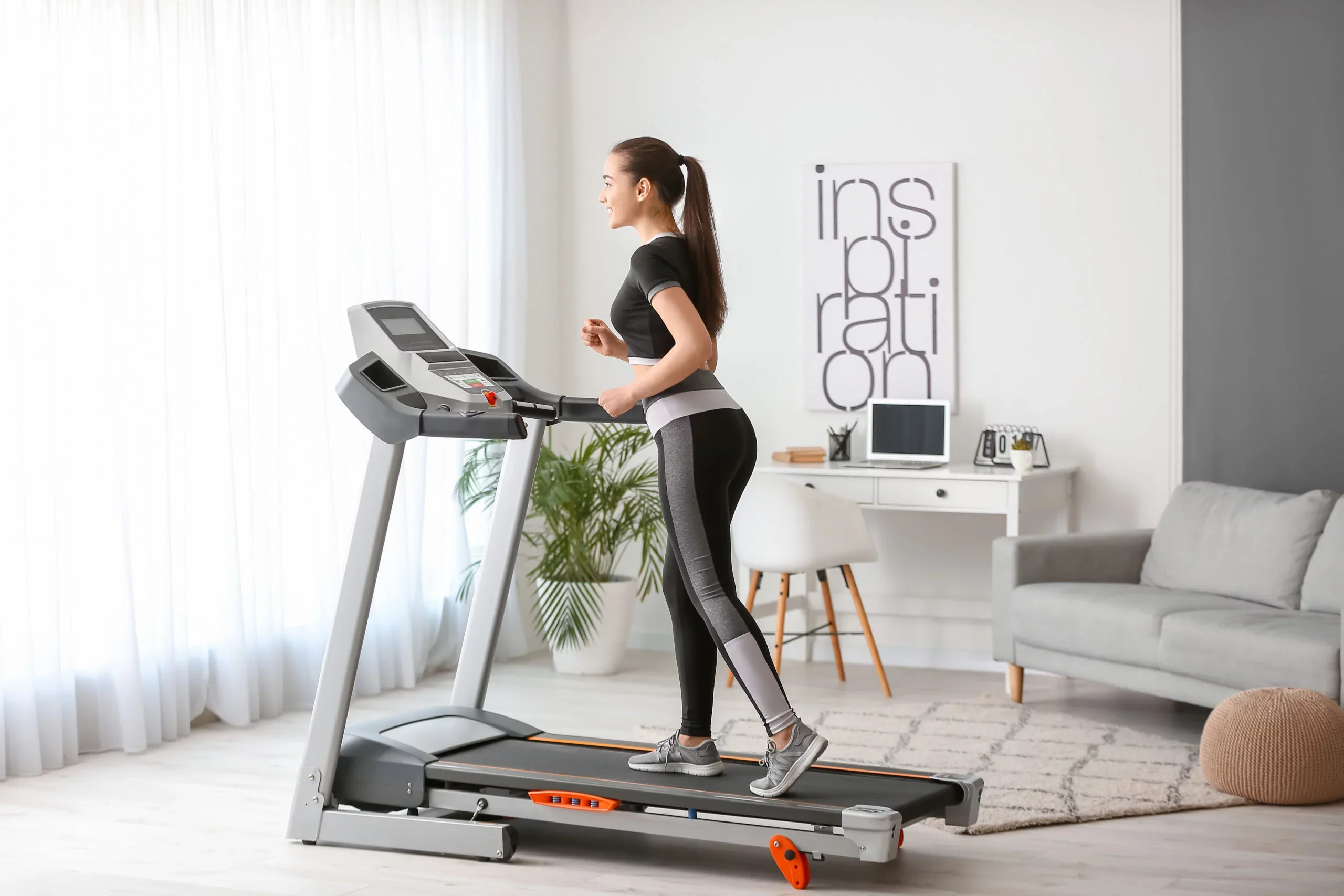How Quick Workouts on the Treadmill can Add Up to Big Results During the Holiday Season
The holidays are a time of merriment for many people – and temptation. Parties at work, school and home can lead to overconsumption of food, drink and desserts. With so much happening, people’s normal exercise routines may fall by the wayside. However, letting your fitness game suffer can lead to weight gain, changes in mood and mental health, and feelings of lethargy.
In this article, I outline some solutions–backed by experts–for staying on top of your workouts during a busy holiday season, and why keeping your fitness routine as a priority may reduce your stress during this time.
How to Deal with Holiday Temptations

“It is important to have flexibility during this time because unexpected social invites often occur, and it’s nice to be social with people versus feeling you have to be rigid within your workout and nutrition regime,” said Robyn L. Goldberg, RDN, CEDRD-S, Los Angeles-based registered dietitian nutritionist, certified eating disorder registered dietitian supervisor and certified intuitive eating counselor. She is the author of The Eating Disorder Trap: A Guide for Clinicians and Loved Ones and the host of The Eating Disorder Trap Podcast. “One of the things I like to say to my clients is that going to a party being ravenous is not a good idea. It’s even more important to check in with yourself to see how you are feeling physically and emotionally. Since the pandemic, there are more feelings of social anxiety when it comes to seeing people, which brings up stress about food choices. At parties, you may encounter foods that might be richer than what you are accustomed to, which might derail you from your plan.”
Making Healthier Food and Drink Choices at Parties
If you are someone who worries about what foods will be available at social events, it may make sense (and assuage your anxiety) to eat a small snack at home before heading to the event. If that isn’t possible and you still want to stick to minimally-processed, simple foods, consider items such as grilled meats or vegetables, salads and fruit, which can help you enjoy these events without feeling like you have overindulged. Some dieticians recommend “the plate method,” in which you fill your nine-inch plate in the following way: 1) fill half of your plate with non-starchy vegetables like zucchini, eggplant, cabbage, broccoli and cauliflower; 2) fill one-fourth of your plate with lean protein like chicken, turkey, and fish or tofu, nuts and beans; 3) fill the remaining fourth of your plate with whole grains like brown rice, whole wheat pasta and/or bread, and starchy vegetables.
“Many party-goers bring delicious salads, and by eating more vegetables along with other richer foods, the fiber helps us to feel satisfied because fiber signals the healthy bacteria in our gut microbiome to say ‘I’ve had enough.’ Cruidite and fresh fruit salads are other healthy offerings typically available at parties,” said
“It’s okay to have richer foods, but having the fiber and polyphenols in fruits and vegetables at parties helps us avoid that party ‘hangover,’” said Sheri Weitz, RDN, CDCES, Los Angeles-based Registered Dietitian and Functional Nutritionist with expertise in eating disorders and diabetes.
Certain drinks can also pack on the calories and sugar. A standard, eight ounce glass of red wine contains about 125 calories and can be a smarter choice than a frozen margarita, which depending on how it is made can contain more than 300 calories per drink (Moyer, 2022). When opting for mixed drinks, you can choose mixers like zero-calories, sugar-free soda or sparkling water.
“In terms of drinks, straight liquor such as whiskey, vodka or tequila are very low in sugar. A wine spritzer is a great way to keep a drink in your hand all night long without imbibing much wine. Please drink responsibly,” reminds Weitz.
Both nutrition experts I spoke with agreed – if you really want to have a food or drink you don’t normally have but are really craving, honor that desire.
“The key is doing emotional and physical check ins with yourself, and not going hungry to an event. If you are seeing a wonderful piece of pecan pie, I think it is important to have it. But asking yourself, am I eating it because I am bored? Checking in behind what the intention is behind that food choice,” said Goldberg.
Weitz echoed this sentiment: “By avoiding the idea that your diet starts in 2023, you can avoid binging at parties in 2022.”
Why You Should Stay Consistent in Workouts
In addition to making healthy food and drink choices, staying on top of your workouts is important too – and not just because engaging in regular exercise has multiple benefits for the body, mind, and spirit.
Benefits for your body include increasing bone density, muscle mass and improving heart health and risk factors for chronic diseases. If you have a chronic disease, you can mitigate the effects of your condition by making exercise a priority. Working out regularly gets your blood flowing, improves your coordination and balance, strengthens your endurance as well as your cardiovascular system, and improves your brain function (Lindberg, 2019).
Mental health benefits of exercise include increased feelings of relaxation and the release of “feel-good” hormones in the body. There are four of these so-called “feel-good” hormones – serotonin, dopamine, endorphins, and oxytocin (Watson, 2021). Each plays a specific and distinct role in the body. Serotonin is the hormone responsible for boosting your mood. When you feel euphoric, serotonin is involved. The hormone at the crux of the brain’s reward system is dopamine, which can lead to feelings of reward. Endorphins are sometimes referred to as the body’s “natural pain reliever,” because they release stress and create feelings of wellbeing. Oxytocin is colloquially known as the “cuddle” or “love” hormone because it is released during physical touch. What most people don’t know are the other ways we can release oxytocin, such as through exercise and music.
“I also suggest staying active during the holidays because two or three days of not exercising can lower a person’s serotonin levels, which can then lead to overeating and the blues,” said Weitz. “Holidays are a great time for hiking, dancing or walks – whatever keeps you happy and staying active.”
Another benefit of working out regularly is that it can help improve your focus. Activities like yoga, pilates, meditation and running can help you achieve a sense of “flow,” which allows you to channel your thoughts and energy onto the present moment.
How to Stay Consistent in Workouts
When family is visiting over the holidays, don’t let the change in routine throw you off your game. Staying consistent in your workouts will allow you to create boundaries, and this is particularly important if you have a strained or difficult relationship with family members. It can be common for these feelings to bubble up during the holiday season. However, by setting aside time to exercise, you can ensure a little portion of your day is just for you.
The good news is: Staying consistent doesn’t have to be difficult. Experts recommend making exercise just as much a part of your routine as the other activities you do regularly, such as cooking, attending doctor’s appointments, or dropping your children off at school. It may be easier if you try to exercise at the same time or on the same day.
“I recommend my clients literally pencil in workouts in a physical planner or create a recurring calendar invite on their digital calendars,” said freelance fitness instructor Miriam Scott, based in Scottsdale, Arizona. “If you exercise at a gym or studio that has a digital app that allows you to sign up for classes, I recommend signing up for your classes for the entire week at the start of your week – so sitting down on a Sunday night or Monday morning and planning your exercise regimen for the week ahead. Some studios charge you if you happen to miss a class or don’t cancel in a timely manner. If your studio doesn’t or if you work out at home, you can use the same concept by putting $10, $20 in a jar if you don’t make your workout appointment. In most cases, the desire not to lose money will motivate you.”
How Often Should I be Exercising?
The U.S. Centers for Disease Control and Prevention recommend adults move their body for 150 minutes each week (CDC, 2022). According to experts, however you want to divide it up based on what works best for your schedule is fine – as long as you get your minutes in.
Depending on your age, you should be prioritizing different things during your workouts. For example, adults ages 18 to 64 should be engaging in moderate exercise 150 minutes each week. What counts as moderate exercise?

The type of exercise matters, too. Vigorous exercise like running, rowing and aerobics are considered “high-intensity” workouts because they get your heart pumping and benefit cardiovascular health. The CDC recommends engaging in vigorous workouts one to two times per week for 20 to 30 minutes. Because you are doing high-intensity exercise, which expends more energy and calories, you don’t have to spend as much time working out as you would when doing a lower intensity exercise.
However, lower-intensity workouts can be just as powerful and impactful as high intensity ones. Lower-intensity workouts include activities like walking, swimming, pilates and yoga. Experts recommend that beginners engage in lower intensity workouts at least three per week for 45 to 60 minutes (Lindberg, 2019).
Finally, integrating the use of weights is also important to increasing and maintaining bone density, which diminishes as we age. Loss of bone density can lead to a diagnosis of osteoporosis, or dangerously low bone density (Yale Medicine, 2022). Low bone density can mean more fractures and even broken bones.
“In my older clients I see a lot of bone density loss,” said Scott. “That is why I recommend using weights – and they don’t have to be heavy or overwhelming. You can start with one or two pound weights and work your way up from there.”
How to Develop a Treadmill Exercise Regimen
If you haven’t used your treadmill since the early days of the pandemic, it’s time to dust it off again. Quick workouts on the treadmill are a perfect way to get your exercise on without even having to leave your home. Best of all, coming up with a sustainable workout plan that involves a treadmill – whether at your home or the gym – is easy to do.

Keep in mind how easy it is to incorporate both aerobic and weight-bearing exercises when using the treadmill, also known as “cross-training.” For example, you could pair a brisk, 30-minute walk on the treadmill with some weight-lifting circuits. If high-intensity training is more your style, you can do quick, fast bursts of all-out running on the treadmill and then switch to planks, which makes use of your own body weight and requires no additional equipment, which makes it ideal to do at home or in a hotel gym. Most hotel gyms have a treadmill if not hand weights you can make use of while traveling during the holidays.
Whether you are new to treadmills, getting back into a workout routine after some time off, or a seasoned fitness buff, always remember to clear any new exercise routine with your healthcare provider.
Conclusion
Regular exercise and the impact it can have on your body, mind and spirit is an important aspect of prioritizing your health. The holidays are typically a busy time of year for everyone, and when things get busy it is easy to sideline your routines and habits. However, making exercise a mainstay of your daily or weekly routine can yield many benefits and help you take good care of yourself.
An easy way to get started on a sustainable fitness routine involves using the treadmill. Treadmills are readily accessible in most gyms and even hotel gyms for those who are traveling during the holiday season. Make sure to integrate a variety into your routine, including high and low-intensity workouts, to balance things out and keep you motivated at the same time.
References
U.S. Centers for Disease Control and Prevention (2022). How much physical activity do adults need? Retrieved from https://www.cdc.gov/physicalactivity/basics/adults/index.htm
Moyer, L. (2022). Which alcoholic beverages have the most (or least) calories? Retrieved from https://www.cspinet.org/article/which-alcoholic-beverages-have-most-or-least-calories
Lindberg, S (2019). What is LISS cardio and is it right for you? Retrieved from https://www.healthline.com/health/exercise-fitness/liss-cardio
Watson S. (2021). Feel-good hormones: How they affects your mind, mood and body. Retrieved from https://www.health.harvard.edu/mind-and-mood/feel-good-hormones-how-they-affect-your-mind-mood-and-body
Yale Medicine (2022). Low bone density. Retrieved from https://www.yalemedicine.org/conditions/bone-density-test
Other Treadmill Reviews:
- Test HomePage
- NordicTrack Commercial X14i
- Echelon Stride
- NordicTrack C 590 Pro
- NordicTrack T 7.5 S - Pros & Cons (2024)
- Sole TD80 Treadmill Desk
- NordicTrack Commercial X11i
- NordicTrack T 8.5 S - Pros & Cons (2024)
- Horizon Elite T5
- Exerpeutic TF1000
- NordicTrack T 6.5 S - Pros & Cons (2024)
- ProForm Sport 5.0
- ProForm Premier 900
- ProForm ZT6
- NordicTrack FreeStride Trainer FS5i (Discontinued)
- Bowflex Max Trainer M5
- BowFlex TreadClimber TC100
- ProForm Power 795
- ProForm Sport 7.0
- NordicTrack Incline Trainer X15i
- NordicTrack C 1650 Treadmill
- Horizon Elite T9
- Official Boston Marathon Treadmill 4.0
- NordicTrack Treadmill Desk
- NordicTrack C 1630 Pro
- NordicTrack C 970 PRO
- Bowflex TC20 TreadClimber

